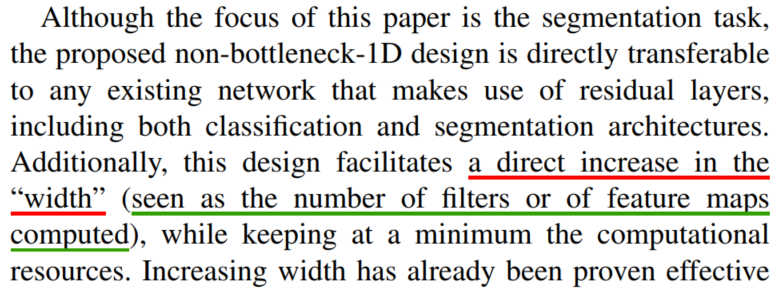This code is a toolbox that uses PyTorch for training and evaluating the ERFNet architecture for semantic segmentation.
For the Original Torch version please go HERE
NOTE: This PyTorch version has a slightly better result than the ones in the Torch version (used in the paper): 72.1 IoU in Val set and 69.8 IoU in test set.
If you use this software in your research, please cite our publications:
"Efficient ConvNet for Real-time Semantic Segmentation", E. Romera, J. M. Alvarez, L. M. Bergasa and R. Arroyo, IEEE Intelligent Vehicles Symposium (IV), pp. 1789-1794, Redondo Beach (California, USA), June 2017. [Best Student Paper Award], [pdf]
"ERFNet: Efficient Residual Factorized ConvNet for Real-time Semantic Segmentation", E. Romera, J. M. Alvarez, L. M. Bergasa and R. Arroyo, Transactions on Intelligent Transportation Systems (T-ITS), December 2017. [pdf]
For instructions please refer to the README on each folder:
- train contains tools for training the network for semantic segmentation.
- eval contains tools for evaluating/visualizing the network's output.
- imagenet Contains script and model for pretraining ERFNet's encoder in Imagenet.
- trained_models Contains the trained models used in the papers. NOTE: the pytorch version is slightly different from the torch models.
- The Cityscapes dataset: Download the "leftImg8bit" for the RGB images and the "gtFine" for the labels. Please note that for training you should use the "_labelTrainIds" and not the "_labelIds", you can download the cityscapes scripts and use the conversor to generate trainIds from labelIds
- Python 3.6: If you don't have Python3.6 in your system, I recommend installing it with Anaconda
- PyTorch: Make sure to install the Pytorch version for Python 3.6 with CUDA support (code only tested for CUDA 8.0).
- Additional Python packages: numpy, matplotlib, Pillow, torchvision and visdom (optional for --visualize flag)
In Anaconda you can install with:
conda install numpy matplotlib torchvision Pillow
conda install -c conda-forge visdom
If you use Pip (make sure to have it configured for Python3.6) you can install with:
pip install numpy matplotlib torchvision Pillow visdom
This work is licensed under a Creative Commons Attribution-NonCommercial 4.0 International License, which allows for personal and research use only. For a commercial license please contact the authors. You can view a license summary here: http://creativecommons.org/licenses/by-nc/4.0/










